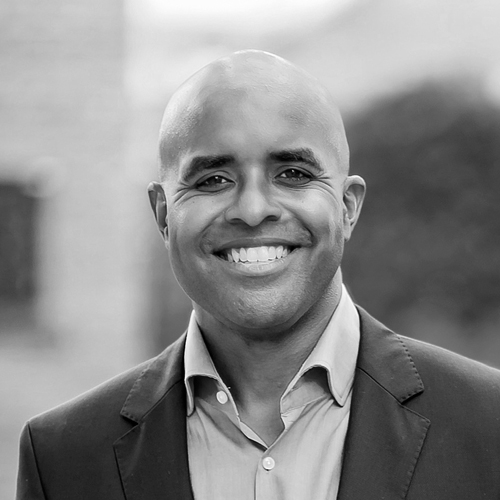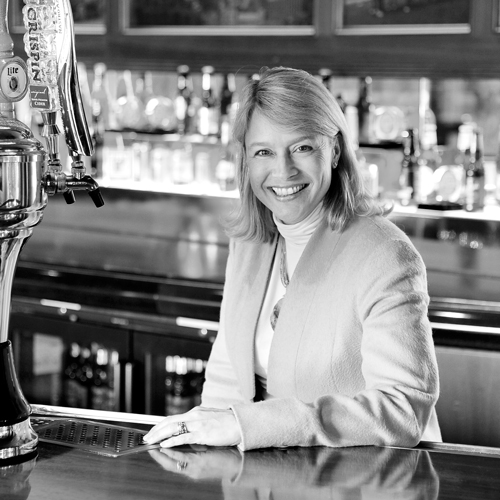When Brightstar Corp. was in the market for a new CEO, Catherine Smith, chief administrative officer and general counsel, helped select him. It was no small task, given the emphasis the
company places on diversity of thought.
“It’s important to get away from the idea that there’s only one way to approach things, by seeking a different understanding,” Smith says, “and you get that understanding by having people in your workforce, up through the highest levels, who have different backgrounds and experiences.”
Smith came to Miami, Florida-based Brightstar after 13 years at Motorola in positions of increasing responsibility, including head of global strategic relationships. One of those relationships was with Brightstar, the world’s largest specialized wireless distributor. Brightstar has nearly 9,000 employees, offices in more than 50 countries, and $10.6 billion in gross revenues.
Bringing different backgrounds and experiences to leadership teams has been a challenge for the telecommunications industry. According to “Accelerating the Digital Economy: Gender Diversity in the Telecommunications Sector,” a February 2015 report by mobile trade association GSMA and A.T. Kearney, while there have been some advances in women’s representation in the workplace, significant steps still need to be taken to bridge the gender gap in the telecom industry.
In three-quarters of telecommunications companies surveyed, women accounted for less than 40 percent of the workforce, and the gender gap becomes more pronounced with seniority: women hold just 32 percent of senior leadership positions (including executive directors and their direct reports) in North America, 20 percent in Europe, 15 percent in the Asia-Pacific region, and 13 percent in the Middle East.
That’s not ideal, Smith says, because decision-making by consumers in the telecommunications industry is heavily dominated by women. “They have the real purchasing power,” Smith says. “You grow your business by growing your customer base, by appealing to your market, and that requires having a complete understanding of a very diversified demographic.” But that’s hard to achieve, she explains, when the companies in the industry are not diversified by gender or ethnicity.
Increasing not just diversity of ethnicity and gender, but “diversity of thought,” Smith adds, will allow companies to be more reactive to customers.
“Diversity of thought refers to a concept that all of us know intuitively and experience throughout our lives,” reports “Diversity’s New Frontier,” a July 2013 Deloitte University Press article. “Each human being has a unique blend of identities, cultures, and experiences that inform how he or she thinks, interprets, negotiates, and accomplishes a task. Diversity of thought goes beyond the affirmation of equality … Instead, the focus is on realizing the full potential of people, and in turn the organization, by acknowledging and appreciating the potential promise of each person’s unique perspective and different way of thinking.”
Substantial research has corroborated that idea, showing that companies with gender-diverse workforces are better able to innovate and outperform. Harvard Business Review reports that gender-diverse organizations are 45 percent more likely to improve market share, achieve 53 percent higher returns on equity, and 70 percent more likely to report successfully capturing new markets.
Brightstar, driven by the need to connect with customers, has pushed to increase diversity of thought by bringing individuals with different backgrounds to its C-suite. That goal manifested in its search for a CEO in early 2015.
The selection committee’s intent was to find a candidate focused on customers, as Brightstar’s former CEO, Marcelo Claure, had been. Claure, who left the company for Sprint, “grew this company not only with a very entrepreneurial approach, but with one that was built on relationships, on understanding the needs of customers,” says Smith. “We wanted that continuity.”
The search team looked for someone who could take Brightstar to the next level of innovation. Simultaneously, the company sought someone who could maintain diversity of thought at the top level of the company.
“You need input from other people, but companies typically hire consultants to tell them things that their own workforce would probably be able to tell them,” Smith says. “Why not simply say, ‘Here’s my view; do you see things differently? If so, why?’ And the best way to do that is to have people who are different from you. You may not end up with a different conclusion, but you’ll have different inputs to ensure your conclusion best reflects the markets you serve.”
Smith and the chairman of Brightstar’s board worked with a search firm to find a pool of candidates who met those needs. The firm wrote a description of the company and role for Brightstar to review before sourcing candidates it believed not only had the requisite experience, but would add a level of leadership the company was looking for.
After the final stage of the screening process, which included one woman and three men of different backgrounds as candidates, Brightstar chose Jaymin B. Patel, former president and CEO of GTECH Americas. GTECH is the largest lottery and gaming company in the regulated gaming industry and provides technology and services to customers in approximately 100 countries.
“When you think about diversity of thought, Jaymin is really someone who represents that,” Smith says. “Although he came from outside telecommunications, he has great familiarity with distribution, which is our core, and has experience in the global marketplace, including Latin America, which was essential to us.”
Patel is of Indian descent, was born in Kenya, and was raised in London, so he met the company’s need for someone who could bring a different perspective.
Smith says Brightstar is fortunate to have an overall diverse workforce because of the many countries in which it operates, and it is looking to expand in a purposeful, efficient way in China, Indonesia, India, and Cuba.
“We want to evolve the telecommunications market in these countries, providing consumers with services and solutions otherwise unavailable—be that buyback and trading of used products, financial solutions, or handset protection services,” Smith says.
That said, Smith thinks there is room for improvement, and she hopes the company’s diversity-of-thought approach will continue to filter down through the organization.
To achieve that, Smith says Brightstar will continue to build infrastructure that’s responsive to the changing needs of its markets. “Companies that do so will be the best, but it’s a matter of timing,” she says. “You have pioneers, the leaders who create the trend, then other companies that follow the trend.”
The key measurement of success, Smith says, will be its C-suite. “Rather than test diversity in the entire workforce, you need to look at who is on the senior management team, who makes the key decisions. If you see greater diversity at the top, we’re making headway.”
Another challenge is that change has to start early. Smith has seen an increase in workforce diversity over the years, but it’s insufficient, which she attributes to the pool of candidates. In Organisation for Economic Co-operation and Development countries, the share of science and engineering degrees held by women is only 38 percent and 25 percent, respectively. “The effort to drive a pool of diverse students has to begin earlier: in the colleges, and law schools, and business schools,” says Smith.

